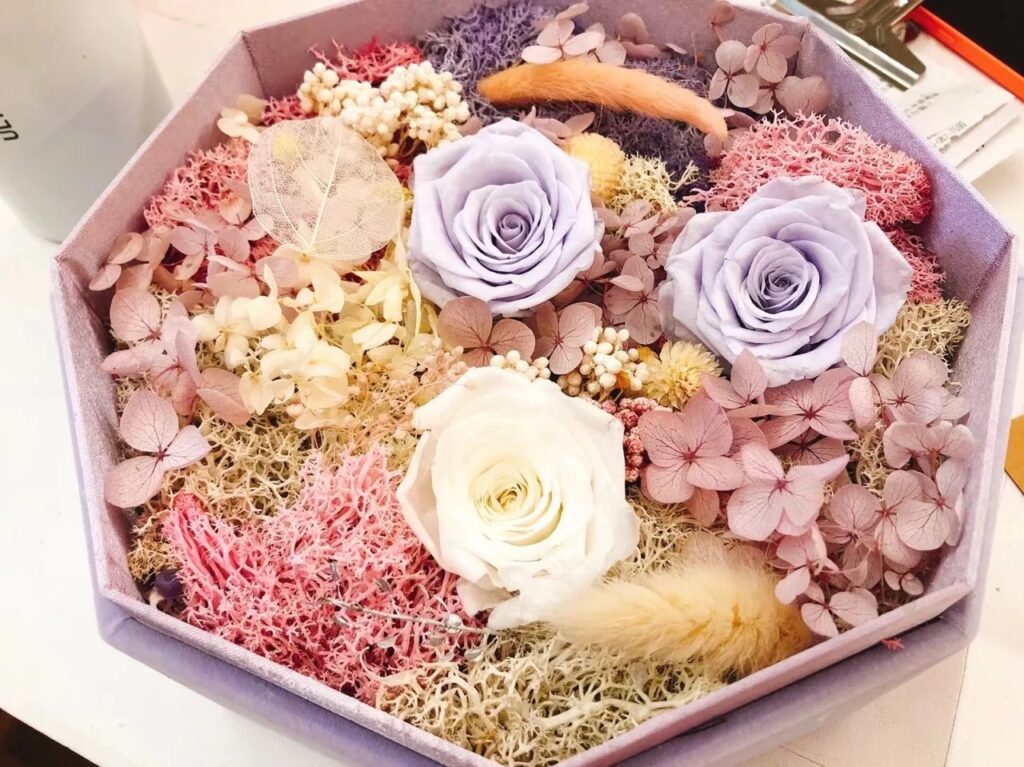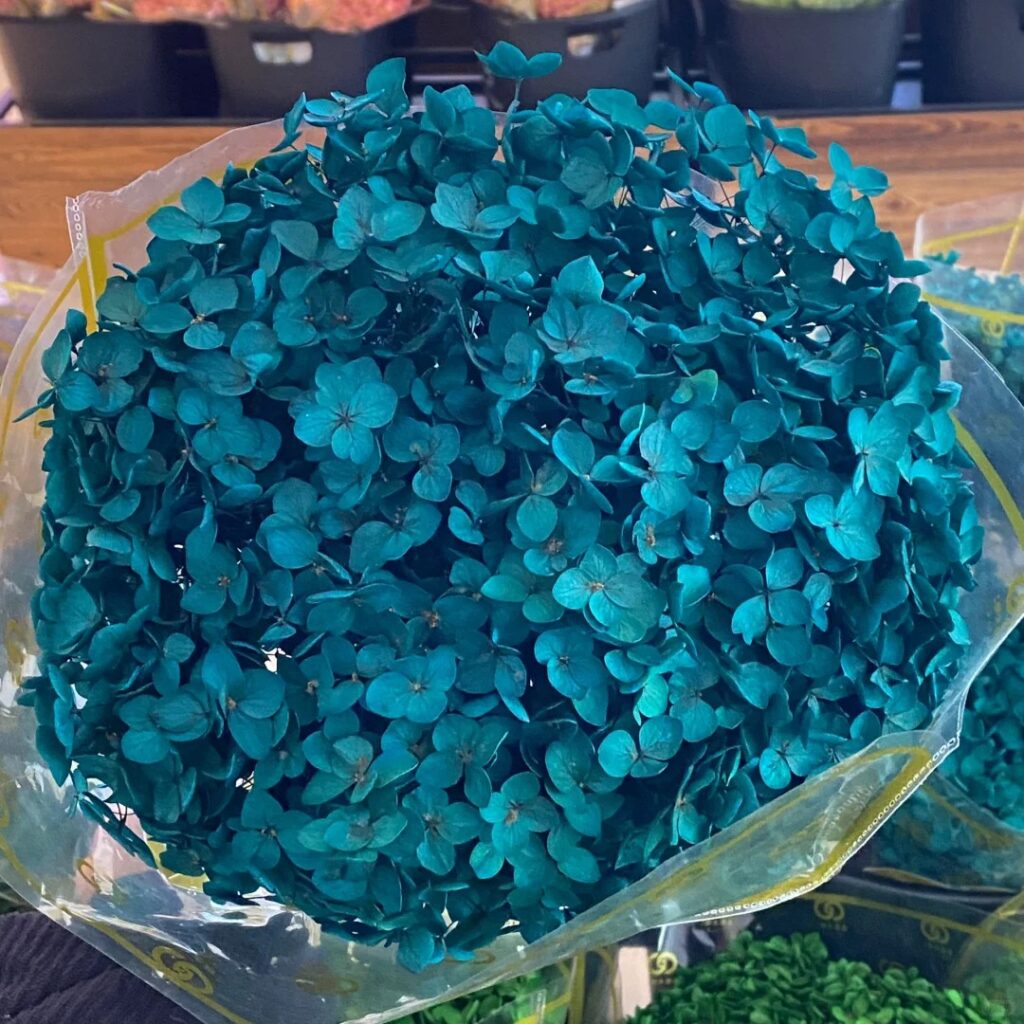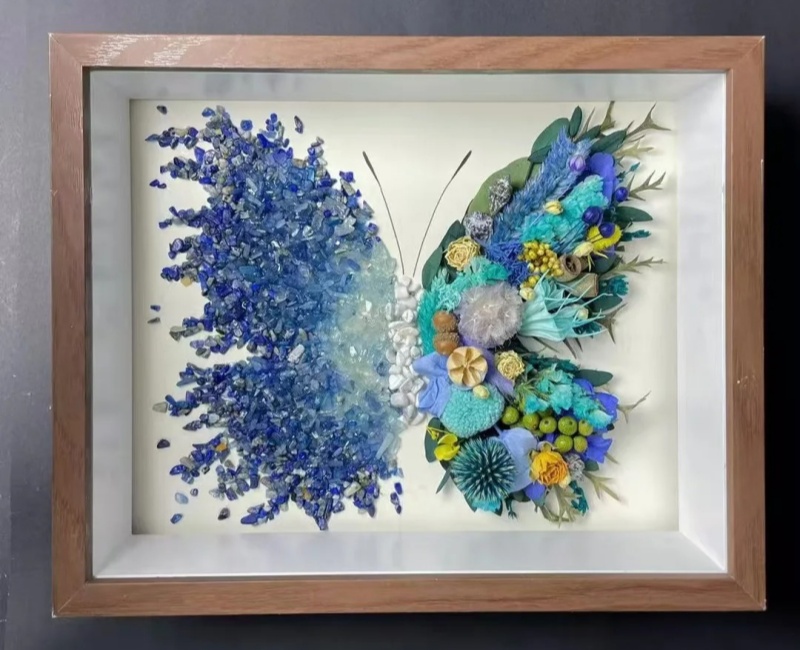Preserved flowers, also known as eternal flowers or ecological flowers, are called “never-fading fresh flowers” abroad. They are made from real fresh-cut flowers such as roses, carnations, phalaenopsis, and hydrangeas, which go through a complex process including dehydration, decolorization, drying, and dyeing to become dried flowers. Preserved flowers retain the natural look, color, and texture of fresh flowers while offering a richer color palette and broader usage. With a preservation lifespan of at least three years, they are ideal for floral design, home decoration, and celebration events as high-end floral products.

The Craftsmanship Behind Preserved Flowers
Material Collection
Flower materials are sourced from both wild and cultivated plants. Proper identification and selection of the right plant organs are crucial. Common floral materials include clustered flowers as focal points, line-shaped flowers for structure, and filler flowers. Ideal flowers are those that have just bloomed, are sturdy, thick-petaled, small to medium-sized, and dark in color. Foliage should be thick, rough in texture, easy to shape, and not prone to curling. Branches and stems must have good form and quality. Collection can occur year-round, but for large-scale production, understanding the flowering season is essential to gather within a 10–15 day window. After collection, materials must be trimmed, sorted, and graded according to dried flower standards.

Color Preservation
Color retention is key in making preserved flowers and can be done using physical, chemical, or artistic methods.
Physical methods involve controlling environmental factors such as temperature, humidity, light, and oxygen during drying. Common methods include high-temp vacuum, low-temp vacuum, and microwave drying.
Chemical methods use agents like tartaric acid, citric acid, or copper sulfate to preserve or alter the original pigment structure.
Artistic methods involve bleaching and then dyeing materials, typically for woody plants with high fiber content. In practice, a combination of all three methods is often used for optimal results.

Drying Process
Drying, or the dehydration of the material, is a crucial step. Freshly gathered materials should be processed immediately.
Natural drying (hanging, flat-laying, upright) is simple but time-consuming, suited to fibrous, low-moisture, small-flower materials.
Forced drying methods include:
Heated drying (oven, floral dryer, microwave — fast and effective for shape and color retention)
Low-temp drying (0–10°C dry air — good color but time-intensive and demanding)
Vacuum drying (ideal for preserved flowers, uses reduced pressure)
Press drying (for pressed flower art — uses stones or clamps)
Embedding drying (using silica gel, salt, or sand to preserve large high-moisture flowers)
Liquid drying (uses non-volatile organic agents like glycerin or formalin — creates glossy, soft flowers but can lead to seepage or mold in high heat)
In practice, these methods are often combined to achieve the best results.

Shaping and Artistic Arrangement
Processed dried flowers become brittle and require specific techniques like piercing, gluing, wiring, or threading for assembly. Artistic composition follows four principles: color harmony, tone coordination, balanced composition, and rhythm.
The Charm of DIY Handmade Butterfly Rose Bouquets
The DIY dreamlike butterfly rose bouquet kit brings together preserved flowers and hands-on crafting, offering a unique and personal experience. On romantic occasions such as Qixi Festival or Valentine’s Day, creating a handmade bouquet for your loved one is a beautiful gesture of affection and creativity. Every petal glued, every butterfly shaped during the process reflects your heartfelt emotions. Once completed, the bouquet can be kept for a long time—just like love, it’s eternal.



